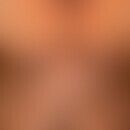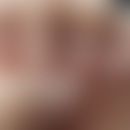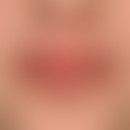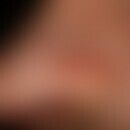Synonym(s)
DefinitionThis section has been translated automatically.
Pathological skin picking is defined as an irresistible urge to repeatedly scratch and pick at the skin, resulting in tissue damage, functional impairment or stress. Despite repeated attempts, people do not manage to change their behaviour in the longer term. The consequences are significant scarring skin lesions including deep, bizarrely configured scar craters.
Occurrence/EpidemiologyThis section has been translated automatically.
In a larger American study collective, the prevalence was 1.4% with a lifetime prevalence of 3-4%.
You might also be interested in
ManifestationThis section has been translated automatically.
Possible at any age; preferred for adolescents; a second manifestation giofel is between 30 and 45 years old. w:m=4:1
LocalizationThis section has been translated automatically.
Face, arms (places that are easily accessible)
ClinicThis section has been translated automatically.
Depending on the trigger, the skin changes are extremely diverse (erythema, skin defects of varying depth, pyoderma, edema, haematomas).
DiagnosisThis section has been translated automatically.
- Clinically difficult "atypical" lesions of different appearance which are difficult to assign to a genuine dermatosis.
- Skin symptoms mostly in easily accessible areas of the body
- Mostly no pruritus present
- Self-injury through force or impulsive scratching
- Bizarre linear configurations, sharp, sometimes angular boundary lines are often found.
- Behaviour and psychological problems are openly discussable and can be admitted (difference to the artefact where secrecy is the most important basis)
- Patient tries to change his behaviour
- Following the scratching, feelings of guilt with shame and disgust
Differential diagnosisThis section has been translated automatically.
The most important differential diagnosis is dermatitis artefacta. As an artefact in the sense of psychodermatology, self-damaging actions on the skin are defined which directly or indirectly lead to an objectifiable, clinically relevant damage to the integument. The damaging action takes place in secret. The connection between clinical findings and the causative activity of the patient is often not immediately apparent to the doctor. The majority of these are so-called borderline patients, patients with clear personality disorders, an addiction problem or unprocessed experiences of abuse. By definition, secrecy, the deliberate concealment of the connections between the dermatological symptoms, belongs to the central essence of the artefact. A characteristic feature is that there is no skin disease which explains the symptoms and/or is secondary induced.
In case of the skin picking syndrome, manipulation is admitted; the manipulation is done consciously and rather at visible places.
It is also important to distinguish it from the so-called impulse control disorders. During the conversation, a connection between the skin or mucous membrane changes and the chronic irritation is usually denied. The patient appears closed, uncooperative. The very different clinical pictures themselves appear as closed morphological units.
Impulse control disorders include (in order of frequency):
- Trichotillomania (habitual hair pulling)
- Onychodystrophy (through nail biting)
- Acne excoriée (des jeunes filles) (exaggerated manipulation of a mild acne vulgaris)
- Morsicatio buccarum (nervous biting or sucking of the cheek mucosa)
- Cheilitis simplex (through habitual and constant licking of the lips, so-called lip eczema)
- Scratch attacks without itching (critical life events)
- Dryness eczema (due to compulsive continuous washing or brushing of the skin)
- Fake knuckle pads (pseudo knuckle pads) due to nervous hand rubbing.
Notice! Impulse control disorders, like the skin picking syndrome, lead to an uncontrollable urge to manipulate the skin/mucosa.
TherapyThis section has been translated automatically.
Psychotherapeutic treatment. Two well effective habit reversal techniques have been described. The techniques include: help with affect regulation, behavioural therapy interventions, cognitive control techniques.
Note(s)This section has been translated automatically.
As mental comorbidities were described:
alcohol dependence (F10.-) (14-36%)
Body dysmorphic disorders (F45.-) (27-45%)
Anxiety disorders (F41.-) (8-23%)
Furthermore: borderline disorders and post-traumatic stress disorders
Further associations exist with so-called grooming disorders (e.g. excessive personal hygiene measures due to frequent combing, shaving and hair removal) such as trichotillomania (F63.3) and onychophagia (F98.8).
LiteratureThis section has been translated automatically.
- Frohoff's K (2015) skin picking syndrome. Skin-related dermatology 31: 35-37
- Gieler U et al (2013) Self-inflicted lesions in dermatology: terminology and classification--a position paper from the European Society for Dermatology and Psychiatry (ESDaP). Acta Derm Venereol 93: 4-12
- Grant JE et al (2014) Impulse control disorders and "behavioural addictions" in the ICD-11 World Psychiatry 13:125-127
- Hustyi KM et al (2013) An analysis of the topography, severity, potential sources of reinforcement, and treatments utilized for skin picking in Prader-Willi syndrome. Res Dev Disabil 34:2890-1899
- Keuthen NJ et al (2010) The prevalence of pathologic skin picking in US adults.Compr Psychiatry 51:183-186
- Mehrbach LM et al. (2017) Dermatotillomania (Skin-Pickig-Disorder): Diagnosis, Explanation and Treatment Act Dermatol 43: 477-493
- Niemeier V et al (2015) Skin picking syndrome. Dermatologist 66: 781-790
Outgoing links (10)
Acne excoriée; Artifacts; Cheilitis simplex; Dermatitis artefacta; Knuckle pads, fake; Lip lick eczema; Morsicatio buccarum; Onychodystrophy (overview); Onychophagia; Trichotillomania;Disclaimer
Please ask your physician for a reliable diagnosis. This website is only meant as a reference.




